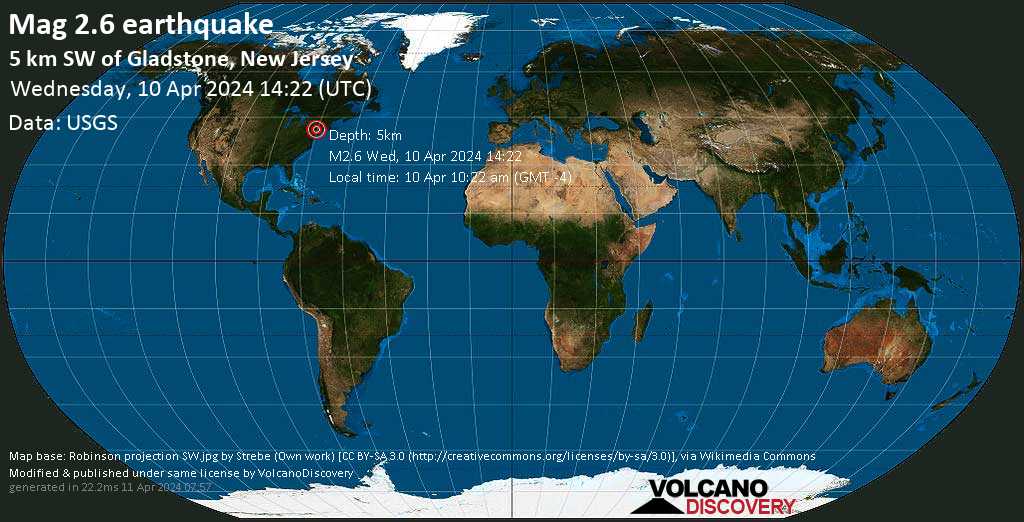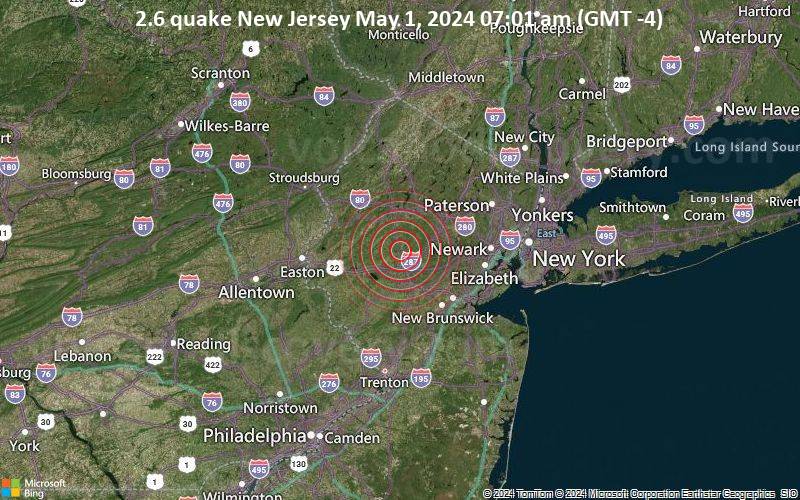On Wednesday morning, residents in New Jersey were met with a mild seismic event as a small earthquake was recorded around 7:15 a.m. ET. According to data from the U.S. Geological Survey, the earthquake measured a magnitude of 2.6 and was centered approximately 1.6 miles west-northwest of Gladstone in northern New Jersey, situated about 43 miles west of New York City. While earthquakes are relatively rare in the region, this recent tremor adds to a series of seismic events that have occurred in the area in recent weeks.

Aftershocks and Seismic Activity
Wednesday’s earthquake is believed to be one of several aftershocks following a more significant quake that struck the region on April 5, registering a magnitude of 4.8. The April 5 earthquake, with its epicenter five miles north of Whitehouse Station, New Jersey, and approximately 45 miles from New York City, was notable for its widespread effects, felt as far south as Norfolk, Virginia, and as far north as Maine.
Seismologists have cautioned that aftershocks may continue to occur in the area for weeks or even months after the initial quake. The recurrence of seismic activity underscores the importance of understanding the geological factors at play in the region.
Understanding the Geological Context: Faults and Seismicity in the Region
The seismic activity in New Jersey is attributed to the presence of the Ramapo Fault, a significant geological feature stretching approximately 185 miles from New York to Pennsylvania. While the area is characterized by generally inactive faults, instances of reactivation can lead to seismic events, as observed in the recent earthquakes.
Jessica Thompson Jobe, a researcher from the U.S. Geological Survey’s Earthquake Hazards Program, emphasized the unpredictability of earthquakes in the region. She noted that while earthquakes may be infrequent, they are not entirely unexpected due to the potential for fault reactivation at any time.

As scientists continue to monitor seismic activity in New Jersey and the surrounding areas, efforts to understand the underlying geological processes are crucial for enhancing preparedness and mitigating the impact of future earthquakes. Public awareness and education regarding earthquake safety measures also play a vital role in ensuring community resilience in the face of seismic events.
